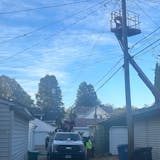Momentum is growing in the Minnesota Legislature for changes to school safety and gun laws in the wake of the Feb. 14 shooting at a Florida high school that left 17 dead.
DFL Gov. Mark Dayton is expected to outline his school safety plan on Wednesday. "I'm willing to consider anything and everything," he said last week.
A House panel on Tuesday discussed a bill introduced by Rep. Jenifer Loon, R-Eden Prairie, that would allow schools to use for the first time a routine maintenance fund for safety upgrades, including secure entrances, security cameras and communications devices.
Attitudes about school safety have shifted across the state since the Florida shootings, Grace Keliher, government relations director for the Minnesota Association of School Boards, said at Tuesday's House Committee on Education Finance hearing. "Enough is enough," she said.
A bill introduced by Sen. Carla Nelson, R-Rochester, would create new funding separate from the existing safe schools levy to beef up school security. Those steps could range from installing steel doors and bullet-resistant glass to paying for armed guards. Each school would decide its own needs.
While Republicans who control the Legislature focus on making schools less vulnerable, DFL lawmakers are moving to tighten gun regulations.
On Thursday, Sen. Ron Latz, DFL-St. Louis Park, plans to propose raising the minimum age to possess a semiautomatic military-style assault weapon from 18 to 21. Rep. Jamie Becker-Finn, DFL-Roseville, is the House sponsor of the bill, which would expand the definition of semiautomatic assault weapons and criminalize their transfer to underage people.
In Washington, House Majority Leader Kevin McCarthy, R-Calif., said Tuesday that the GOP-controlled chamber will vote next week on a bill creating a federal grant program to train students, teachers and school officials to identify and intervene early when they spot signs of potential violence. The bill would implement federal school-threat assessment protocols designed to prevent school shootings.


